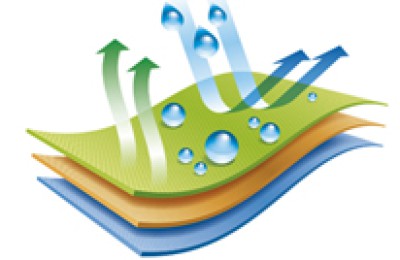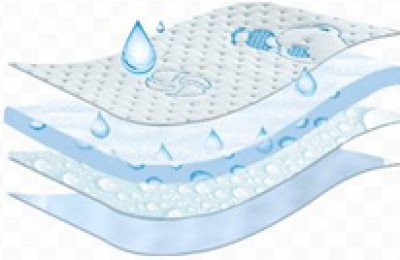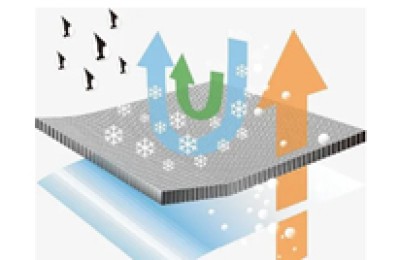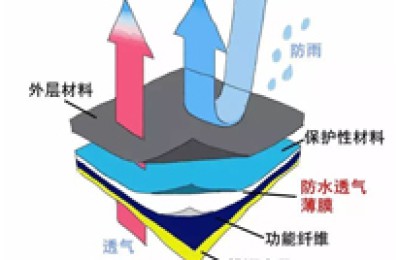Production capacity growth should not be too fast. How does the filament weaving industry respond to the market rebound?
my country’s filament weaving industry’s export resilience has exceeded market expectations and achieved good results in 2022.
According to China Customs data, from January to October 2022, my country’s chemical fiber filament fabric exports totaled 18.119 billion meters, a year-on-year increase of 15.65% and a year-on-year increase of 28.42% over the same period in 2019; the average export price was US$0.95/meter. , a year-on-year increase of 9% and an increase of 6.74% compared with the same period in 2019.
Although the exports of the filament weaving industry have achieved year-on-year growth and the market popularity has increased, it cannot be denied that the homogeneous competition in the industry is still relatively serious. Industry experts said that the future development focus of the filament weaving industry needs to shift from the expansion of production capacity to technological progress and upgrading, product development and innovation.
Don’t be impulsive when the market picks up
“The growth in foreign trade is gratifying, which not only shows that my country’s filament weaving industry is a textile industry with international competitive advantages, but also reveals that the international demand for chemical fiber filament fabrics is still growing and has not been affected by international political and economic factors. .” Wang Jiayi, President of the China Filament Weaving Association, said that in 2022, my country’s filament weaving industry has withstood the test and survived the difficult moments with resilience and patience, and the development of the industry has shown a trend of stability and progress. From 2020 to 2022, the exports of the filament weaving industry have continued to maintain steady growth.
Generally speaking, although the filament weaving industry has been slightly less profitable in the past year due to factors such as high and volatile raw material prices and increased labor costs, many industry experts have analyzed that the bottoming of the industry may have been completed. , the market will enter the market recovery stage in 2023.
However, in the face of market recovery, relevant experts from the China Filament Weaving Association do not agree that corporate investment strategies should shift from defense to offense.
“As of the end of 2019, the scale of my country’s filament weaving industry reached 700,000 looms, of which 640,000 were water-jet looms. my country’s chemical fiber filament fabric output that year was 55 billion meters. As of the end of 2021, my country’s The scale of looms in the filament weaving industry reached 795,000, of which 730,000 were water-jet looms. The output of filament fabrics that year was 55.7 billion meters. Comparing these two sets of data, we can find that under the influence of factors such as international political and economic turmoil, , the scale of my country’s water-jet looms is still expanding by an average of 6.8% per year, while the output is only growing by an average of 0.6% per year.” Zhang Cheng, assistant president of the association, told the China Textile News reporter that due to investment in the filament weaving industry Province, high efficiency, and relatively low entry barriers. In recent years, production capacity has expanded significantly, but output growth has slowed down. This also means that the industry-wide operating rate is obviously insufficient, and new production capacity cannot be effectively released.
To this end, the China Filament Weaving Association recently held a special review and passed the “Initiative on Avoiding Blind Investment” (hereinafter referred to as the “Initiative”) at the third session of the Standing Council. The “Initiative” proposes that the production capacity of the filament weaving industry should not grow too fast, but should maintain a reasonable speed and keep pace with market demand.
Expanding too fast is difficult to make a profit
Once the Initiative was released, it aroused attention and discussion in the industry.
“In the past few years, we have always said that industry demand continues to decrease, but this may not be just a problem of insufficient demand.” Qian Xialan, the relevant person in charge of Rudong Yilan Textile Co., Ltd., said that the industry is in trouble, not simply due to Because demand is suppressed, market supply also exceeds actual demand.
“The low threshold for engaging in the filament weaving industry is the main reason for the explosive growth of weaving companies in the past period.” Zhou Zhengxu, general manager of Nantong Hengchang Textile Co., Ltd. said frankly that a few years ago, as long as enterprises had certain financing If you have the ability, you can spend five to six million yuan to buy a dozen looms and enter this industry on a small scale. “The equipment can be paid in installments, and the technical requirements are not high. They can be easily operated.”
Irrational investment is also the root cause of the industry’s difficulties. “Judging from many years of industry experience, as long as the market rebounds slightly, companies will soon expand production.” The person in charge of Yongshang Textile Co., Ltd. gave an example. In the second half of 2019, as downstream customers tried to develop new products to drive consumption, The increase in varieties led to an increase in demand for gray fabrics, and the market liquidity suddenly improved, resulting in the addition of about 2,000 looms in the local area. However, this prosperous period only lasted a few months.
If production capacity grows too fast, product prices will come under pressure. According to monitoring data from SunSirs, since January 2023, my country’s polyester filament market prices have maintained a slight upward trend. Among them, polyester POY increased by 4.35%, polyester FDY increased by 3.5%, and polyester DTYgained 2.92%.
However, although the price of textile raw materials has made a good start, the price of fabrics has never improved. A person in charge of a filament weaving company in Shengze, Jiangsu, who did not want to be named, revealed that his factory has received orders one after another, but his mood is not very bright.
“After the Lantern Festival, we probably received more than 1 million meters of fabric orders. The average price was 3 yuan/meter to 4 yuan/meter, and the profit was very high.Thin, mainly running volume, the average machine efficiency is only 50 yuan/day. Nowadays, the price of gray cloth cannot rise at all. The market price is generally low. Although there are rumors of price increases, there are very few real price increases. “The person in charge said, “For example, the market only needs 10 million meters of fabric, but now 11 million meters are circulating in the market. We cannot think that only the 1 million meters of fabric are affected, and the other 10 million meters cannot be sold at a good price. ”
According to the inventory days of sample enterprises monitored by China Silk City Network, it can be seen that the inventory days of local weaving enterprises are still at a high level of 35.5 days.
Don’t take the old path and innovate
If you are unable to do something, you should seek others from yourself.
“This year’s market situation once again proves that ordinary low-end products are facing unprecedented fierce competition. Once companies start to compete on price and preserve production and retain employees, they will become passive and have an adverse impact on the entire industry.” Zhang Cheng pointed out, When the market supply exceeds demand, if the supply and demand relationship is not actively adjusted and companies only rely on “cost reduction and efficiency improvement”, it is easy for enterprises to enter the dilemma of cost reduction-price reduction-loss.
Faced with this situation, many companies have shifted their development focus from the expansion of production capacity to technological progress, products and innovation.
“If you keep following your own old path, you may be eliminated by the market. While seeking stability, companies must also innovate. If there are no new varieties, these conventional products will first have no profit points, and secondly, they will They will be eliminated by customers at any time.” Qian Xialan said that the company will not follow the production trend when the market is good, so that when the market is not ideal, the company can maintain stable development and serve customers with high-quality products and innovative thinking. .
“Enterprises must regard product innovation as a top priority for development. At present, large-scale mass production of popular goods is absolutely impossible. Enterprises must actively focus on product innovation, proactively promote equipment upgrades and technological transformation, and achieve core goals. The effective improvement of competitiveness and the upgrading and transformation of the industry as a whole.” Zhang Cheng said.
Wang Jiayi affirmed the performance of filament weaving enterprises in terms of product innovation and technological progress in the past year. He introduced that as of December 2022, there are 43 current National Bank group standards in the filament weaving industry, including 37 product standards, accounting for about 85% of the total standards.
Despite the impressive results, Wang Jiayi emphasized that product innovation will never end, and the development of high quality in the industry has a long way to go. In the future, enterprises should also pay attention to the following aspects when developing new products: formulating accurate and clear product positioning and brand positioning; extending the construction of the internal industrial chain of the enterprise in a timely manner; continuing to promote high quality The development of interwoven fabrics; increasing the development of industrial textiles; increasing the research and development of green and low-carbon products.
“At present and in the foreseeable future, technological innovation will continue to play a decisive role in the transformation and upgrading of the industry. . Good filament fabrics are definitely not a result of weaving, but the result of improvements and investments in the entire industry chain from raw material production to terminal consumption. We hope that all companies will proactively conduct product research and development and contribute to China’s filament weaving in international competition. industry to seek a better future.” Wang Jiayi said.
AAA fabric network GFHJTYJUTI
Disclaimer:
Disclaimer: Some of the texts, pictures, audios, and videos of some articles published on this site are from the Internet and do not represent the views of this site. The copyrights belong to the original authors. If you find that the information reproduced on this website infringes upon your rights, please contact us and we will change or delete it as soon as possible.
AA








